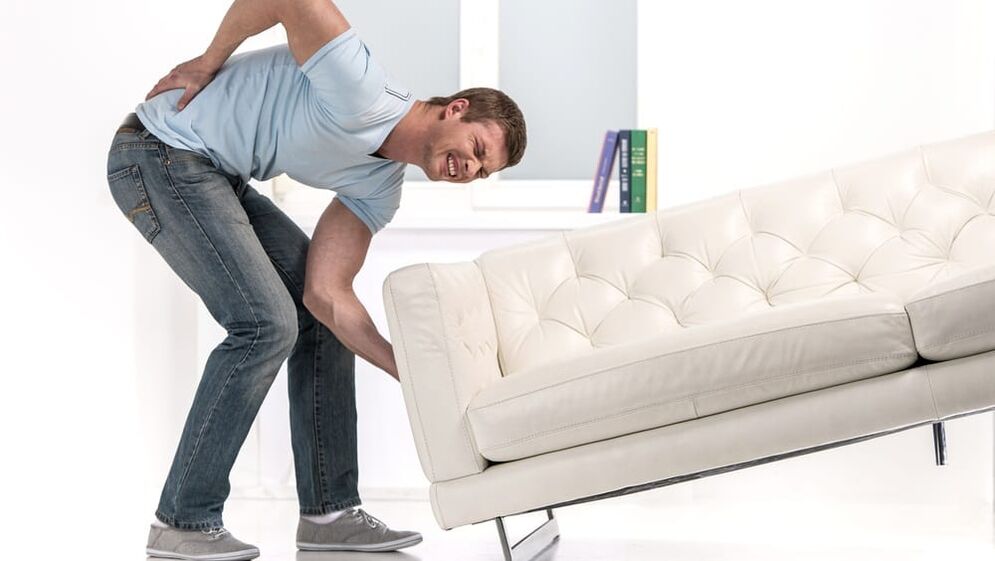Spinal osteosarcoma is a chronic disease that is based on the degenerative process of bone and cartilage tissues. All parts of the spine are affected by the pathological process.
Description of the disease
The disease is common in the elderly, but recently there has been an increase in the number of young patients presenting with the disease. Depending on the location of the spinal cord injury, it is commonly classified as cervical, thoracic, and lumbar osteonecrosis. The main and characteristic sign of lumbar spondylosis is a dull pain of moderate intensity, due to compression of the roots of the spinal cord.
Pathogenesis and stages
The development of the disease is usually divided into several stages. The process begins with an asymptomatic process, when initial changes occur in the cartilage tissue and ends with the complete fusion of several vertebrae together.
First
The early stage is the most difficult to diagnose, because of the mild signs of the disease, it is also called preclinical. The patient has general weakness, discomfort in the back. These signs are often confused with fatigue. In medical practice, grade 1 osteonecrosis can only be diagnosed incidentally, for example, during a preventive examination.
Second
In the process of grade 2 bone degeneration, the patient feels pain in the spine. This stage is a consequence of the first when the necessary precautions are not taken. There is an initial destruction of the disc. The fixation of the vertebrae is broken, the distance between them is gradually reduced, leading to compression of the nerve fibers of the spine.
Based on the patient's complaint, objective examination and X-ray, the doctor diagnosed "grade 2 cervical fibroids" and prescribed treatment. Subject to the implementation of all the recommendations of a specialist, the disease can be managed without serious consequences.
The third day
The third stage is characterized by the beginning of irreversible processes in the cartilaginous tissues of the annulus. The nucleus pulposus is dehydrated, leading to a herniated disc. Pain occurs due to compression of spinal nerves. At this stage, the disc is irreversibly destroyed. Hernias are removed surgically, treatment is carried out with the help of drugs.
Wednesday
At this stage, the body adapts to the changes that lead to the spine. Compensatory bone tissue grows along the edges of the vertebrae (bone-forming bone) to strengthen the affected part. They can compress the roots of the spinal cord, causing pain. As a result, bone cells grow together, causing complete immobilization of a certain segment of the spine.
Symptoms and varieties

Osteochondrosis is a chronic disease. The alternation of periods of exacerbation of the disease and remission is his distinctive feature. The symptoms of the disease are quite typical. Expressed by pain in the back, when moving suddenly and carrying heavy objects, the pain is more intense, there may be a feeling of numbness in the limbs, fatigue, less exertion, weakness.
The constant aches and pains lead to excessive stress and fatigue in the body. In chronic degenerative bone disease, when the vertebral discs compress nerve fibers, the pain syndrome can be of a shooting nature and radiate to the back of the head, shoulders, and lower extremities.
Cervical
This is one of the most common and dangerous sites of the disease, since there are a large number of nerve fibers and major major vessels in the cervical region.
With cervical osteonecrosis, symptoms may be as follows:
- severe headache;
- pain radiating down the shoulders and limbs, shooting into the head;
- have a limitation of neck movement;
- dizziness and loss of consciousness;
- noise in the ears;
- impaired coordination of movements.
These symptoms are caused by impaired blood circulation in the cervical arteries due to inflammation, swelling, and muscle spasms. With the appearance of vertebral artery compression syndrome and without appropriate medical treatment leads to cerebral ischemia.
chest
Chest bone tumors are quite rare. Signs of thoracic osteosarcoma are manifested in the form of pain and burning sensation between the shoulder blades. When the intercostal nerve is compressed, it leads to intercostal neuralgia. It is represented by acute pain in the chest, which does not allow deep breathing.

Violation of blood circulation and lack of nutrients due to the inflammatory process can cause diseases of the internal organs located in this area, various cardiovascular pathologies. Qualified treatment in this case is essential.
Lumbar
More than 50% of cases occur in this department. The initial sign of lumbar spondylosis is a characteristic pain in the lower back, which increases with sudden movement, lifting heavy objects, even when the weather changes. Do not exclude symptoms such as varicose veins, numbness in the extremities, joint pain.
The appearance of osteoma at a later stage of the disease often leads to sciatica - sciatica, one of the possible complications. Lumbar root inflammation also refers to complications of osteonecrosis. Manifestations are pain in the buttocks, spreading along the thighs and shins, down to the feet.
Causes and ways to avoid
As a rule, the disease often causes several causes at once, so it is also considered multifactorial. The main reasons for the development of osteonecrosis are:
- back injuries and bruises;
- cumulative diseases and metabolic disorders;
- sedentary lifestyle and overweight;
- congenital and acquired postural disorders;
- heredity.

The prevention of osteonecrosis stems from simple but effective methods. Need to change to a more active lifestyle (go swimming), don't forget to exercise your back when sitting motionless for a long time. You should start eating right, including in your diet as many fruits, vegetables, and dairy products as possible.
Effective prevention will also be to seek medical help promptly when the first symptoms of the disease occur.
Treatment
Treatment of osteonecrosis of the spine must be complex. The main directions of treatment of the disease are:
- drug therapy (NSAIDs, analgesics, chondroprotectors, vitamins);
- physiotherapy (electrophoresis, UHF);
- Massage;
- exercise therapy;
- gymnastics (can be done at home);
- surgical treatment (surgical removal).


































